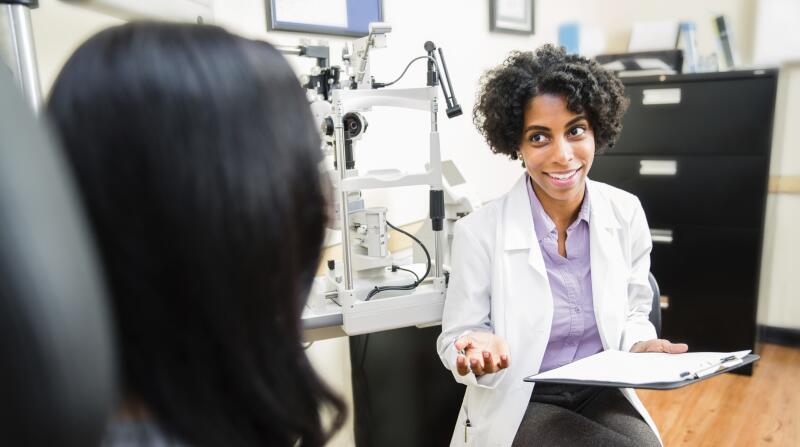10 Things to Know About Cataract Surgery

Medically Reviewed By William C. Lloyd III, MD, FACS
Written By Catherine Spader on August 31, 2020
There are more than 3 million cataract surgeries performed in the US each year. Find out what happens during this common eye procedure.
-
 The Facts on Cataract Eye SurgeryCataracts are an eye condition, common particularly among older people, that causes the lens of the eye to become clouded, reducing vision. Unlike glaucoma, which affects the optic nerve and cannot be reversed, cataracts can be treated with eye surgery by an ophthalmologist. Here’s an overview of the cataract eye surgery process, lens implants, recovery, and potential complications. Knowing what to expect will help you decide if it's the right treatment for you.
The Facts on Cataract Eye SurgeryCataracts are an eye condition, common particularly among older people, that causes the lens of the eye to become clouded, reducing vision. Unlike glaucoma, which affects the optic nerve and cannot be reversed, cataracts can be treated with eye surgery by an ophthalmologist. Here’s an overview of the cataract eye surgery process, lens implants, recovery, and potential complications. Knowing what to expect will help you decide if it's the right treatment for you. -
 1. Cataract surgery replaces a clouded lens with an artificial lens.Cataract surgery can restore clear vision that is lost due to a cataract. A cataract is a clouding or loss of transparency of the eye lens. Cataract surgery removes the nonfunctioning lens and replaces it with an artificial implant called an intraocular lens (IOL). The IOL becomes a permanent part of your eye.
1. Cataract surgery replaces a clouded lens with an artificial lens.Cataract surgery can restore clear vision that is lost due to a cataract. A cataract is a clouding or loss of transparency of the eye lens. Cataract surgery removes the nonfunctioning lens and replaces it with an artificial implant called an intraocular lens (IOL). The IOL becomes a permanent part of your eye. -
-
 2. Cataract surgery allows you to see more clearly.Cataract surgery treats advanced cataracts that interfere with clear vision. Cataracts can make it hard to read, drive, see at night, and perform your usual activities. Cataracts are usually due to aging. They can also be caused by eye injury, eye surgery, a birth defect, or radiation or sun exposure.
2. Cataract surgery allows you to see more clearly.Cataract surgery treats advanced cataracts that interfere with clear vision. Cataracts can make it hard to read, drive, see at night, and perform your usual activities. Cataracts are usually due to aging. They can also be caused by eye injury, eye surgery, a birth defect, or radiation or sun exposure. -
 3. An eye surgeon performs cataract surgery.An ophthalmologist will perform your cataract surgery in a hospital or outpatient surgery clinic. An ophthalmologist is a physician and an eye surgeon. Ophthalmologists have specialized training in caring for eye diseases with surgery, medications, and other treatments. Let Healthgrades help you find an ophthalmologist in your area.
3. An eye surgeon performs cataract surgery.An ophthalmologist will perform your cataract surgery in a hospital or outpatient surgery clinic. An ophthalmologist is a physician and an eye surgeon. Ophthalmologists have specialized training in caring for eye diseases with surgery, medications, and other treatments. Let Healthgrades help you find an ophthalmologist in your area. -
 4. Your doctor makes an incision to insert the artificial lens.Your doctor will use anesthetic eye drops to numb your eye. You may also have sedation or general anesthesia to make you unaware of the surgery. Your doctor will make an incision along the edge of your cornea, the clear dome that covers the eye. The cloudy lens is removed through the incision and replaced with an artificial intraocular lens (IOL). Repeat surgery is performed on the other eye in 4 to 8 weeks, if needed.
4. Your doctor makes an incision to insert the artificial lens.Your doctor will use anesthetic eye drops to numb your eye. You may also have sedation or general anesthesia to make you unaware of the surgery. Your doctor will make an incision along the edge of your cornea, the clear dome that covers the eye. The cloudy lens is removed through the incision and replaced with an artificial intraocular lens (IOL). Repeat surgery is performed on the other eye in 4 to 8 weeks, if needed. -
 5. There are two types of cataract surgery.Small incision cataract surgery is the most common cataract surgery. It involves making a small incision. Your doctor inserts a tiny ultrasound probe to soften and break up the lens and removes it with suction. Extracapsular cataract surgery uses a slightly longer incision to remove the lens in one piece.
5. There are two types of cataract surgery.Small incision cataract surgery is the most common cataract surgery. It involves making a small incision. Your doctor inserts a tiny ultrasound probe to soften and break up the lens and removes it with suction. Extracapsular cataract surgery uses a slightly longer incision to remove the lens in one piece. -
-
 6. Cataract surgery has rare but serious risks.As with all surgeries, there are some risks involved with cataract surgery. Cataract surgery complications are rare but can be serious. Possible problems include postoperative infection, glaucoma, retinal tear, vision problems, secondary cataracts, scarring of eye tissue, and bleeding inside the eye. You can reduce some risks by following your treatment plan exactly as directed.
6. Cataract surgery has rare but serious risks.As with all surgeries, there are some risks involved with cataract surgery. Cataract surgery complications are rare but can be serious. Possible problems include postoperative infection, glaucoma, retinal tear, vision problems, secondary cataracts, scarring of eye tissue, and bleeding inside the eye. You can reduce some risks by following your treatment plan exactly as directed. -
 7. The surgical prep includes an eye exam and other tests.You’ll need a complete eye exam in preparation for cataract surgery. You may also need special eye tests, blood tests, and other tests. Your doctor will give you specific instructions about taking medications and when to stop all food and drink before surgery. You will also need to arrange a ride home after surgery.
7. The surgical prep includes an eye exam and other tests.You’ll need a complete eye exam in preparation for cataract surgery. You may also need special eye tests, blood tests, and other tests. Your doctor will give you specific instructions about taking medications and when to stop all food and drink before surgery. You will also need to arrange a ride home after surgery. -
 8. You’ll have minor discomfort after surgery.Your doctor will use anesthesia to keep you comfortable during surgery. Tell your doctor before surgery if you are anxious about pain. You may have minor eye discomfort, sensitivity, or itchiness after surgery and during your recovery. You doctor will treat your symptoms. Call your doctor if you are following your treatment plan but you are still experiencing pain.
8. You’ll have minor discomfort after surgery.Your doctor will use anesthesia to keep you comfortable during surgery. Tell your doctor before surgery if you are anxious about pain. You may have minor eye discomfort, sensitivity, or itchiness after surgery and during your recovery. You doctor will treat your symptoms. Call your doctor if you are following your treatment plan but you are still experiencing pain. -
 9. Cataract surgery recovery takes about two weeks, but complete healing and optimal vision takes up to 10 weeks.You’ll probably go home the same day of your surgery. Recovery is a gradual process that varies between individuals. You will need to wear a temporary eye patch or shield to protect your eye as you heal. Prescription eye drops will speed up the healing process. Most people return to usual activities within a couple of weeks. Full recovery takes eight to 10 weeks. Some people still need to wear glasses after recovery for optimal vision.
9. Cataract surgery recovery takes about two weeks, but complete healing and optimal vision takes up to 10 weeks.You’ll probably go home the same day of your surgery. Recovery is a gradual process that varies between individuals. You will need to wear a temporary eye patch or shield to protect your eye as you heal. Prescription eye drops will speed up the healing process. Most people return to usual activities within a couple of weeks. Full recovery takes eight to 10 weeks. Some people still need to wear glasses after recovery for optimal vision. -
 10. Most people see crisper, clearer images after cataract surgery.You may also see brighter colors. Your improved vision will allow you to pursue activities that were difficult with cataracts. This includes driving, reading, writing, sports, and needlework. Clearer vision will also improve the safety of driving and nighttime activities.
10. Most people see crisper, clearer images after cataract surgery.You may also see brighter colors. Your improved vision will allow you to pursue activities that were difficult with cataracts. This includes driving, reading, writing, sports, and needlework. Clearer vision will also improve the safety of driving and nighttime activities.
10 Things to Know About Cataract Eye Surgery & Recovery













